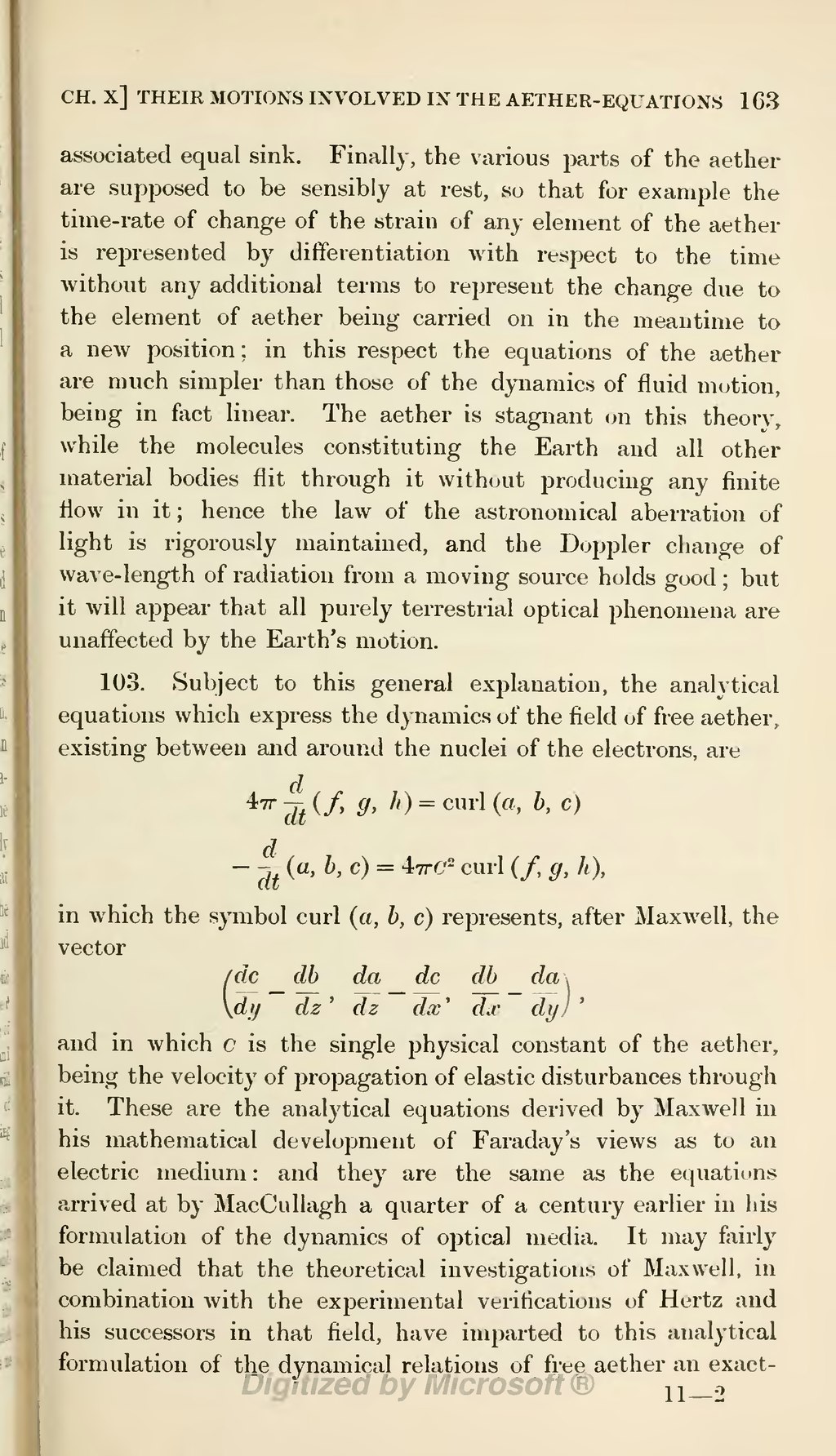associated equal sink. Finally, the various parts of the aether are supposed to be sensibly at rest, so that for example the time-rate of change of the strain of any element of the aether is represented by differentiation with respect to the time without any additional terms to represent the change due to the element of aether being carried on in the meantime to a new position; in this respect the equations of the aether are much simpler than those of the dynamics of fluid motion, being in fact linear. The aether is stagnant on this theory, while the molecules constituting the Earth and all other material bodies flit through it without producing any finite flow in it; hence the law of the astronomical aberration of light is rigorously maintained, and the Doppler change of wave-length of radiation from a moving source holds good; but it will appear that all purely terrestrial optical phenomena are unaffected by the Earth's motion.
103. Subject to this general explanation, the analytical equations which express the dynamics of the field of free aether, existing between and around the nuclei of the electrons, are
|
|
in which the symbol represents, after Maxwell, the vector
and in which c is the single physical constant of the aether, being the velocity of propagation of elastic disturbances through it. These are the analytical equations derived by Maxwell in his mathematical development of Faraday's views as to an electric medium: and they are the same as the equations arrived at by MacCullagh a quarter of a century earlier in his formulation of the dynamics of optical media. It may fairly be claimed that the theoretical investigations of Maxwell, in combination with the experimental verifications of Hertz and his successors in that field, have imparted to this analytical formulation of the dynamical relations of free aether an exactness




